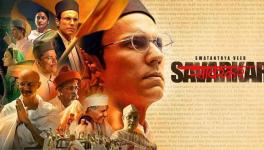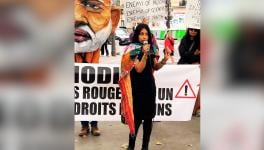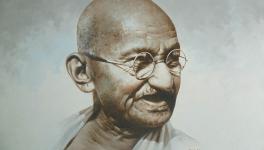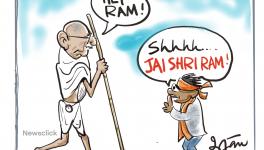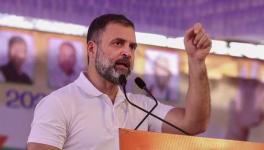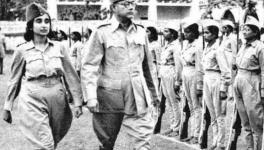Ramayan in the Times of Pandemic
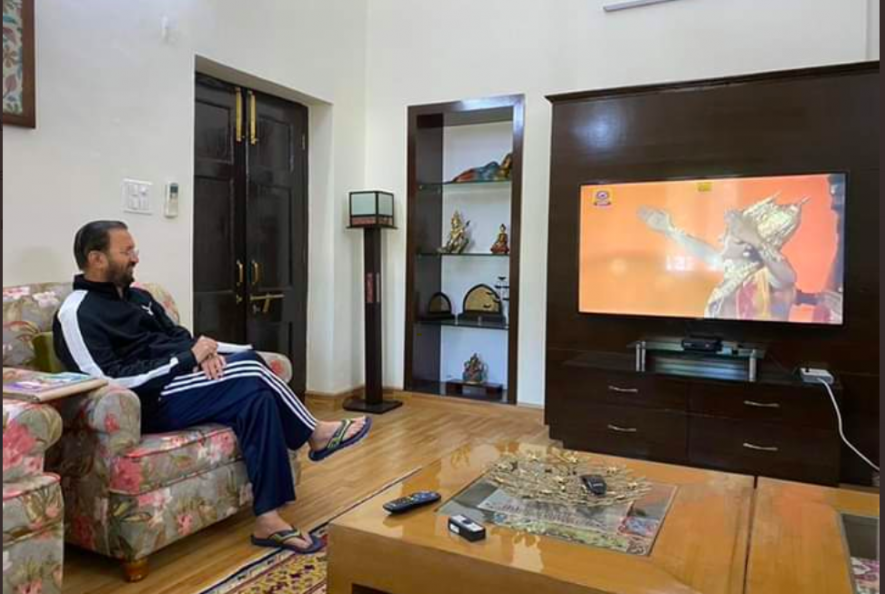
Paradoxical though this may sound, but the government's decision to telecast daily the Ramayan serial on Doordarshanmay further reduce the epic that was known for its cross-community following, into a tool for political mobilisation. As it is, the Ramayan'suniversal appeal declined after it was usurped for a political purpose in the 1980s by the Vishwa Hindu Parishad and its affiliates within the SanghParivar.
It cannot be ignored that the Ramayan is globally one of the most popular epics and despite its politicisation in the past three decades,it continues to have a huge following in Indonesia, the most populous Muslim country in the world. The extent of the epic's following can be estimated by the fact that it has been performed as a ballet continuously every evening from 1976 at Yogyakarta, an Indonesian city. Till date, around 16,000 performances have been staged without fail at an open air stage, with provision to shift the show indoors when it rains.
But, the version of the Ramayan which is performed in Yogyakarta every evening, is in contrast to the version that is being once again unspooled on the small screen by Doordarshan. In fact, not just the Indonesian version, but there are extensive divergences in the Ramayan narrative in South East Asia, the region noted for the widespread popularity of the epic, its mythical hero and his associates.
As part of the government's strategy to underscore what Prime Minister Narendra Modi stated, "India's deep civilisational and historical relations with the ASEAN region", the Indian Council for Cultural Relations put together a five-day long Ramayan Festival during the commemorative Summit to celebrate 25 years of the association between India and ASEAN countries which was hosted by India in New Delhi in January 2018.
In this festival, cultural troupes from ASEAN countries performed different presentations of the Ramayan. Significantly, these performances established that there is no single retelling of the Ram story: the more the epic travelled and was rewritten or re-rendered in different languages across regions and countries, the epic and characterisation of the principal characters underwent transformation.
The plurality of the Ramayantradition has been studied and commented upon at length by various writers ranging from the academic, to those writing for general readers (including this writer). The academic writings ranged from internationally renowned scholars like JL Brockington's classic, Righteous Rama: Evolution of An Epic,written in 1981, to the essay on Ramayan by the historian, poet and litterateur AK Ramanujan, a Padma Shri awardee, against which SanghParivar associates waged a successful stir and got its struck off the reading list of a Delhi University course.
Significantly, Brockington has been one of the most eminent Sanskrit scholars in the area of Ramayan studies since the late 1960s and his classic was published in Indian in 1984, much before the Ram Janmabhoomi movement took off in a big way. In all his writings, be it on the Ramayan or on the Hindus religious experiences, he has repeatedly emphasised the diversity of the religion and that Hinduism had never been a unitary phenomenon.
Likewise, Ramanujan's essay, Three Hundred Ramayanas: Five examples and Three Thoughts on Translation, repeatedly asked how many Ramayans were there. In contrast to the plurality of the Ramayan tradition, which enabled its cross-community following over a considerable span of time, the SanghParivarpromoted just its version and interpretation as the 'true' version of the Ramayan.
The Ramayanand Ram, this includes RamanandSagar's serial, which is patrionisedand promoted by the SanghParivar, is in many ways, a 'sanitised' versionof the epic which presents Ram as the not-capable-of-any-wrong-doing 'ideal man'. Those portions in the epic, either Valmiki's or even Tulsidas', where the character of Ram comes across as flawed and often gnawed by inner turmoil because he was unable to be true to his compassionate self, are exorcised.
It has to be noted that the SanghParivar's agitation presented Ram as the political symbol of the nation and argued that the non-existence of a Ram temple at Ayodhya at the very spot believed to be his birth site,was political humiliation of Hindus in the country. The temple was presented as symbol of hegemony over others,which was necessary to erase indignities suffered at the hands of 'foreigners' who were also 'invaders'.
In the 1980s, when the Rajiv Gandhi government contentiously decided to commission the Ramayanserial, the Ram Janmabhoomi movement had already taken off but not gathered ground. With this decision, the government violated a long held taboo of not promoting any content that had potentially religious content. When it was first shown, the serial virtually grounded the nation every Sunday morning. The serial also stripped plurality from multiple narratives that the original epic spawned over centuries. Sagar's serial projected Ram as a 'correct' and uni-dimensional character and the linear projection negated essence and beauty of the tale and pushed away significant sections of Indians from the classic story, because it became a manifesto of a political project.
Ashok Singhal, the VHP leader who spearheaded the agitation till Lal Krishna Advani provided it with political coloration,has been on record to say that the serial "was a great gift to our movement."MahantAvaidyanath, spiritual predecessor and guru of Uttar Pradesh chief minister, Yogi Adityanath, had also remarked that Sagar had spread pracharprasad or auspicious publicity for Ram and that movement.The period that the serial ran -- from January 1987 to August 1989 (with a break for some months) -- was roughly the period when the movement metamorphosed from being a disquieting, yet insignificant agitation, into a mainstream political issue which would mutate the socio-political foundations of India.
The decision to run the serial again comes in the backdrop of the seemingly tearing hurry to get the Ram temple construction project going. Barely hours after Modi announced complete lockdown in India on March 24, Yogi Adityanath left for Ayodhya to perform an unscheduled ceremony to shift the Ram Lalla idol from the canopy covered shed to a temporary structure till the temple is built. The speed with which Adityanath moved that night, completing the ritual and ensuring this was publicised before dawn, underscored that coronavirus threat or not, the BharatiyaJanata Party’s pursuit of polarisation shall continue unabated.
The telecast of the serial is at one level not necessary given that the construction of the temple is a given. However, much more of the Hindu nationalistic agenda remains on the pending list and at the top of which are the 'restoration' of the two temples in Varanasi and Mathura to previous glory and demolition of the mosques adjacent to them.
That in the process Ram and the Ramayanwill come out 'emasculated', is of no concern because the objective is not to ensure that Ram is seen as Imam-e-Hind, the coinage of AllamaIqbal. By the time Sagar's serial runs its present course, a new generation of Indians would have moved further away from the multi-dimensioned kernel of the Ramayan and Ram.
The writer is a journalist and author. His first book was The Demolition: India at the Crossroads. His latest book is The RSS: Icons of the Indian Right.
Get the latest reports & analysis with people's perspective on Protests, movements & deep analytical videos, discussions of the current affairs in your Telegram app. Subscribe to NewsClick's Telegram channel & get Real-Time updates on stories, as they get published on our website.











